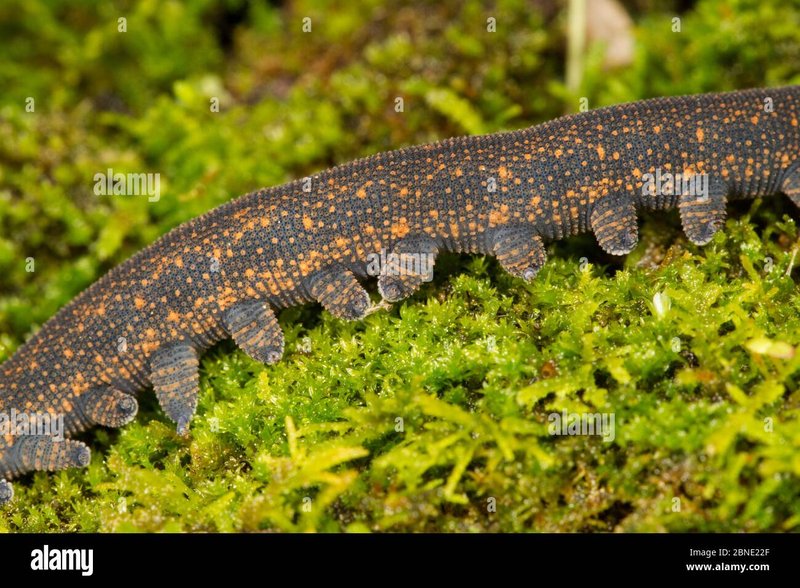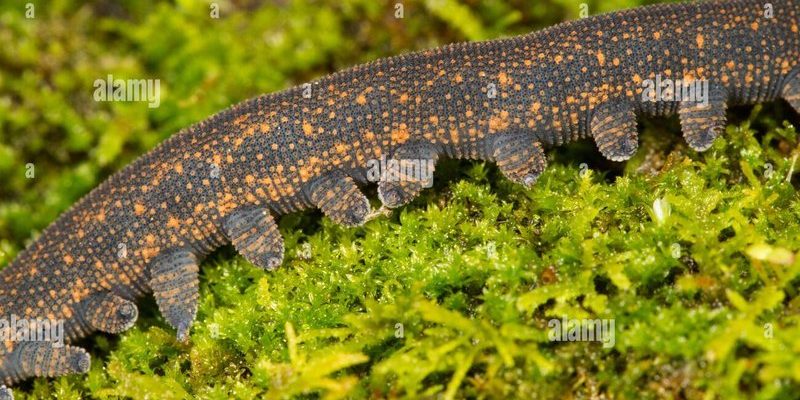
Velvet worms, with their smooth, velvety texture and peculiar movements, are often overlooked despite their intriguing lifestyles. They play a crucial role in their ecosystems by helping maintain balance and contributing to nutrient cycling. So, what exactly makes moss-covered logs such a perfect home for these fascinating creatures? Let’s dive deeper and explore their unique habitats, what they need to thrive, and the delightful quirks that make them so special.
What Are Velvet Worms?
To fully appreciate the velvet worm’s habitat, it’s essential to understand what these creatures are. Velvet worms, or *Onychophora*, are ancient relatives of insects and are often described as a cross between a worm and an insect. They have a soft, segmented body covered in a velvety layer, which gives them their name. These fascinating creatures can vary in color, from vibrant greens to earthy browns, allowing them to blend in perfectly with their surroundings.
They typically measure around 2 to 15 centimeters in length and have a series of stubby legs that help them move through their damp environments. What’s really interesting is their unique hunting style: they shoot a sticky, slime-like substance at their prey to capture it. This process is not just efficient; it’s also a testimony to how specialized these creatures are in adapting to their habitats.
You might be wondering how these worms fit into the ecosystem. Well, they primarily feed on small invertebrates like insects and worms, helping control their populations. In turn, they become food for larger predators, making them an important link in the food chain.
Why Moss-Covered Logs?
When you picture a typical rainforest or forest floor, moss-covered logs might not be the first thing that comes to mind. However, these logs provide an ideal habitat for velvet worms for several reasons.
First, moss offers **moisture**. Velvet worms thrive in humid environments, and the lush green moss retains water, creating a damp microhabitat that’s just right for them. This humidity is essential for their survival since they can easily dry out if exposed to dry air. Think of moss-covered logs as cozy apartments for these little creatures, offering comfort and protection from the elements.
Second, moss-covered logs are rich in **organic material**. As the logs decompose over time, they create a nutrient-rich environment that supports a web of life. This includes fungi, bacteria, and other small organisms—many of which velvet worms can munch on. So, it’s like living in a fully stocked pantry!
Lastly, the **shade** provided by moss-covered logs helps regulate temperature. Velvet worms prefer stable, cool temperatures, and the shade from logs helps create an ideal setting, protecting them from the harsher conditions that might exist in the open.
The Importance of Moisture
Moisture is a big deal in the world of velvet worms. These creatures have a delicate balance to maintain, and without the right level of humidity, they can face some serious challenges. Here’s how moisture plays a crucial role in their survival.
In dry conditions, velvet worms can become desiccated, meaning they lose too much water and can’t function properly. This is why you often find them in damp, moist environments. The **moss** on the logs not only retains water but also helps keep the surrounding air humid. It’s like having a built-in humidifier!
Additionally, moisture promotes the growth of fungi and other microorganisms, which are essential for the velvet worm’s diet. Without sufficient moisture, their food source could dwindle, making it harder for them to find sustenance.
So, when you see a moss-covered log, remember that it’s not just a pretty sight—it’s a vital lifeline for these unique creatures.
The Role of Decaying Wood
Decaying wood plays another fundamental role in the habitat of velvet worms. As logs break down, they create a dynamic environment teeming with life. Here are a few reasons why decaying wood is essential for velvet worms.
First, as mentioned earlier, decay provides a **nutrient-rich** environment. The breakdown of wood brings in various microorganisms, which serve as food for velvet worms. Think of it as a buffet, with a variety of options to choose from.
Second, decaying wood offers structural support. Velvet worms need places to hide and navigate. The crevices and holes in decaying logs provide perfect hiding spots from predators and a safe environment to reproduce. It’s like having a secure, private space to call home!
Finally, decaying wood supports biodiversity. In addition to velvet worms, these habitats are home to a host of other organisms—including fungi, beetles, and small mammals. This interaction between species helps maintain the health of the ecosystem, ensuring that everything works together in harmony.
Challenges of Habitat Loss
Unfortunately, velvet worms and their cozy homes are facing significant threats. Habitat loss due to deforestation and urbanization poses a real danger to their survival. Here’s what you should know about these challenges.
When forests are cleared, moss-covered logs disappear, along with the moisture and nutrients they provide. This directly impacts velvet worms, as they lose their homes and food sources. Without suitable habitats, populations can decline, leading to local extinctions.
Additionally, climate change is altering moisture levels and temperatures in various ecosystems. Velvet worms are particularly sensitive to these changes, and if their environment becomes too dry or too hot, they may struggle to survive. It’s essential to address these issues to protect not just velvet worms, but the entire ecosystem that depends on them.
Conservation efforts are crucial. By preserving natural habitats and implementing responsible land-use practices, we can help ensure that these fascinating creatures continue to thrive in their moss-covered log homes.
How to Spot Velvet Worms
Now that you know a bit more about velvet worms and their habitats, you might be curious about how to spot these elusive creatures. Honestly, it’s not easy—they’re masters of camouflage! However, there are a few tips to help you find them.
First, look for **moss-covered logs** in shaded, damp areas. This is where velvet worms are most likely to be found. When you find a suitable log, try gently brushing away some of the moss or leaf litter to see if you can spot their characteristic velvety texture.
Second, pay attention to the **time of day**. Velvet worms are often more active during the night when it’s cooler and more humid. If you’re out exploring at night, keep your flashlight handy and look for movement or shiny surfaces—those may be your best indicators.
Lastly, remember to be gentle. If you do find a velvet worm, try not to disturb it too much. They’re delicate creatures, and we want to ensure they stay happy and healthy in their natural habitat.
Velvet worms may not be a household name in the world of wildlife, but their unique habitats and lifestyles are certainly worth appreciating. By providing moisture, nutrients, and shelter, moss-covered logs create the ideal environment for these fascinating creatures. As we learn more about their needs and the challenges they face, it’s clear that protecting their habitats is vital—not just for the velvet worms themselves, but for the entire ecosystem they inhabit.
Next time you come across a moss-covered log in the forest, take a moment to appreciate the hidden world it supports. Who knows? You might just catch a glimpse of a velvet worm, living its little life in the damp shadows of the forest. With our growing understanding of these remarkable creatures, let’s work together to ensure they continue to thrive for generations to come.

